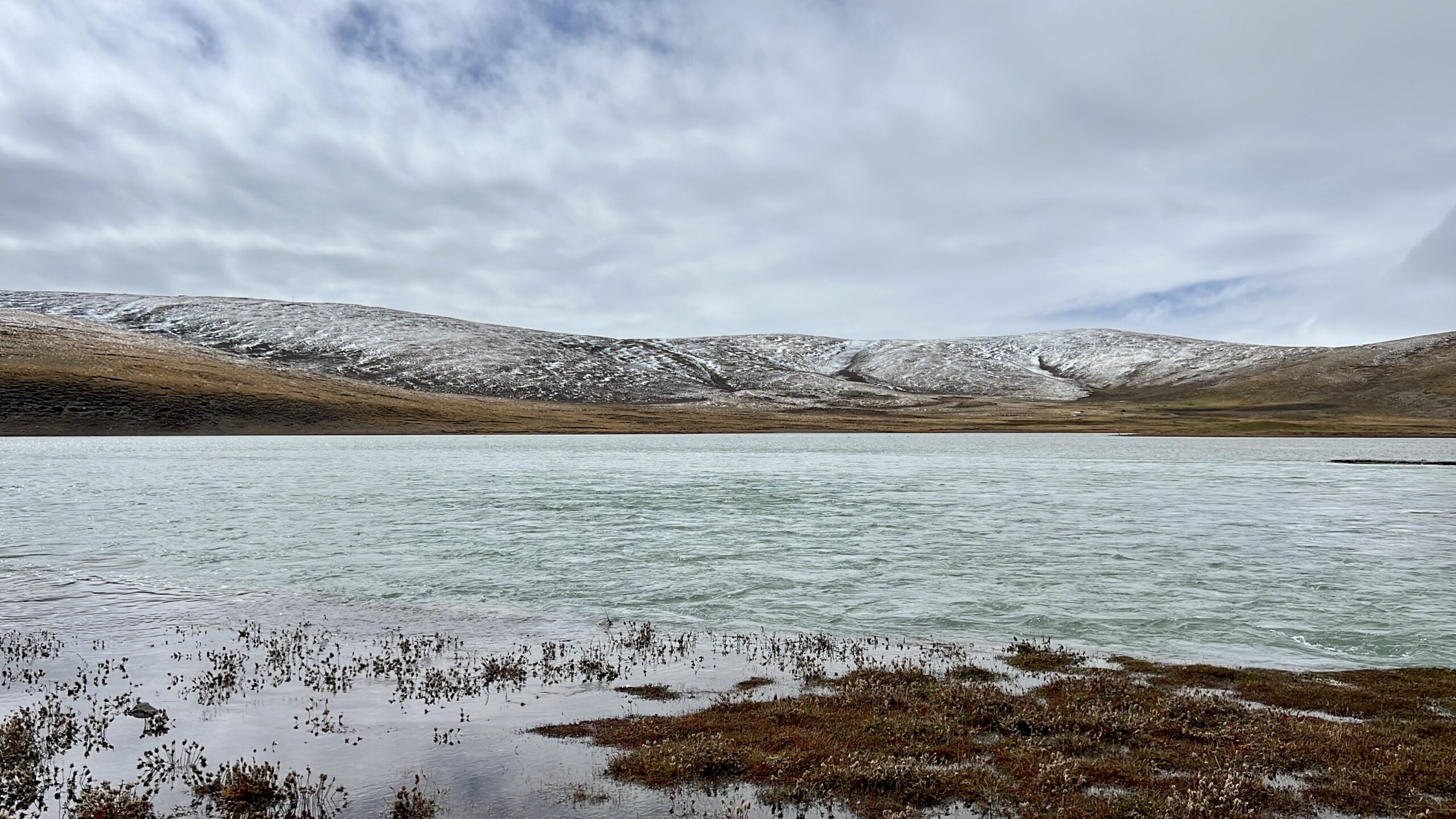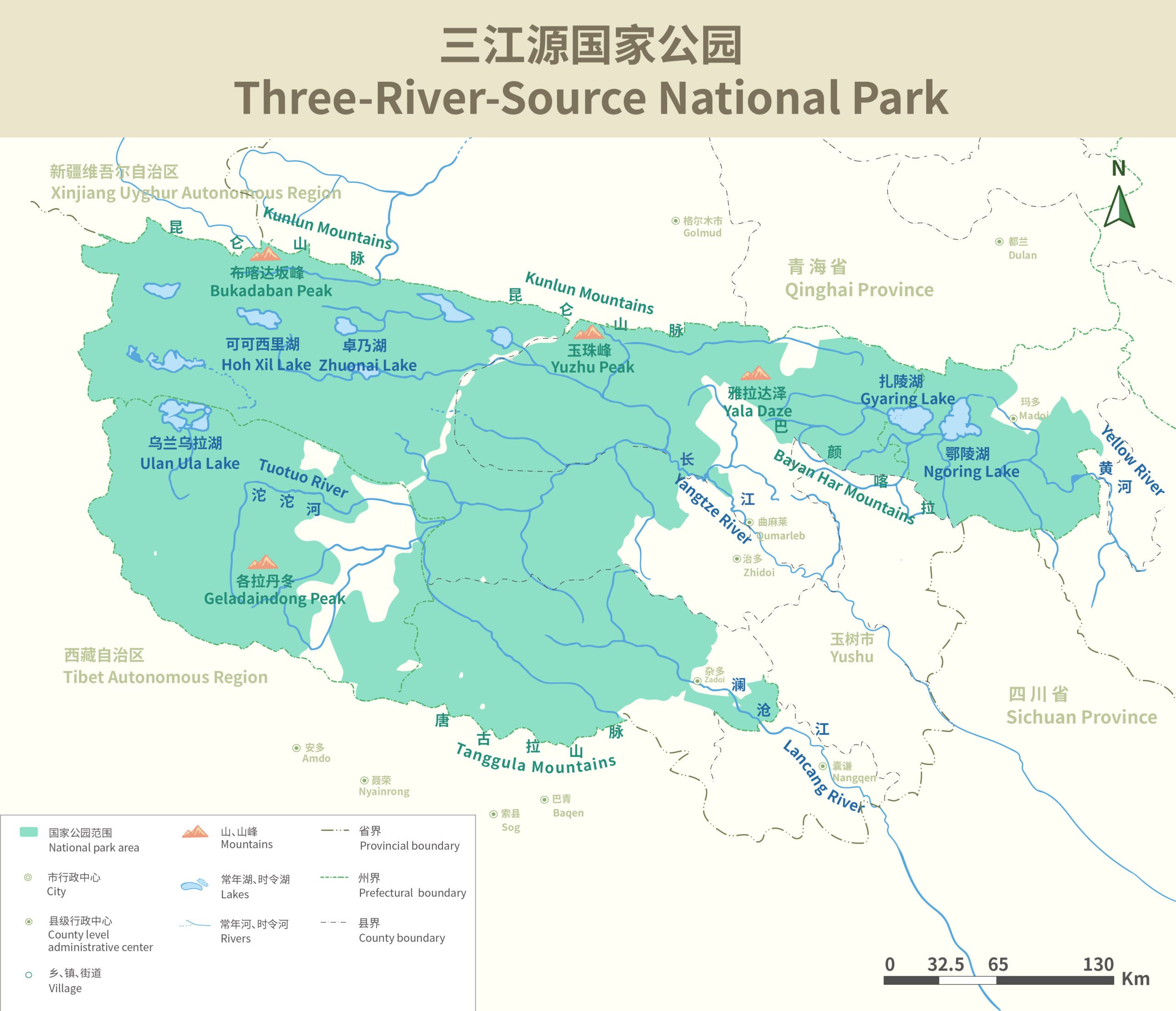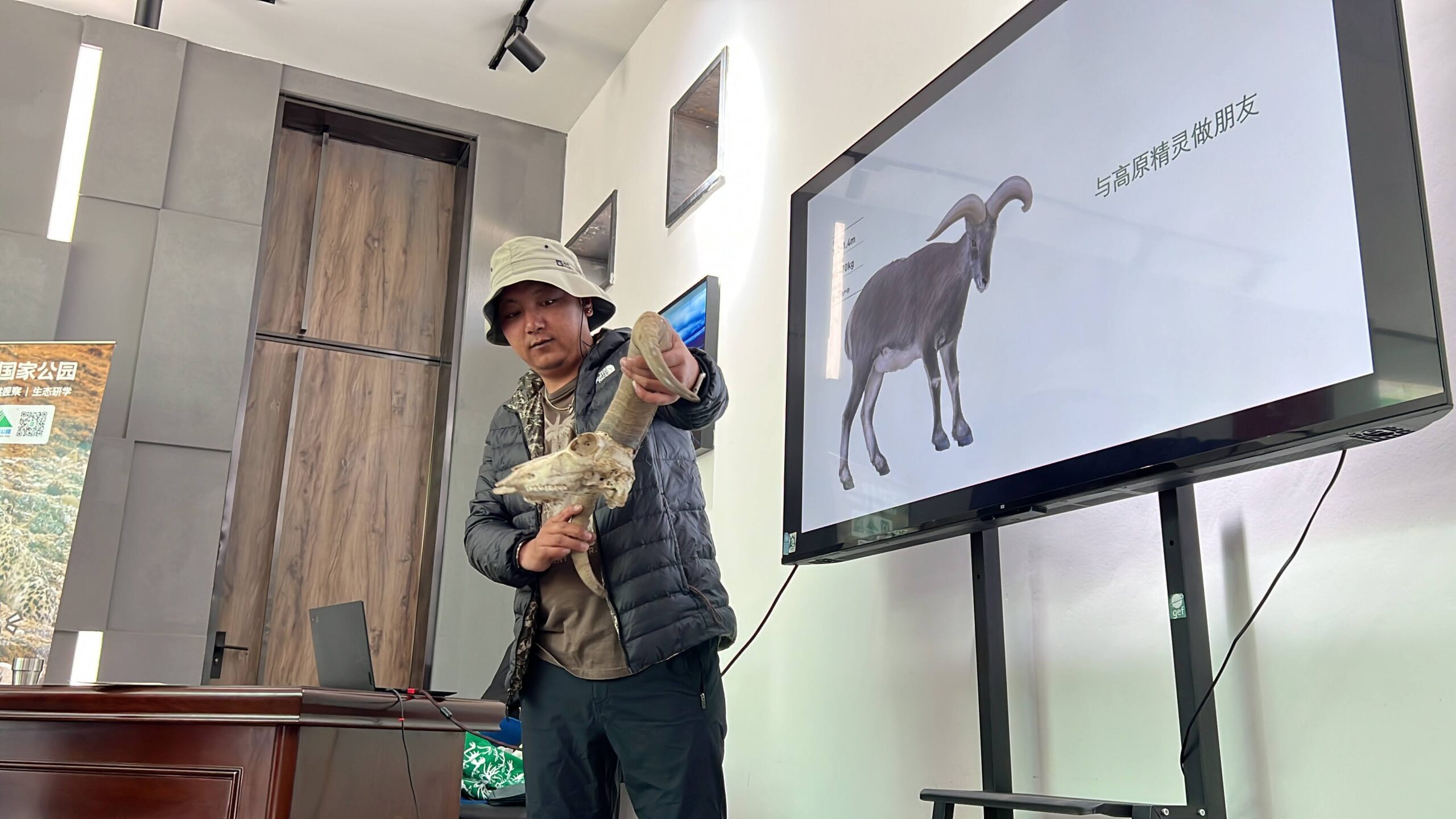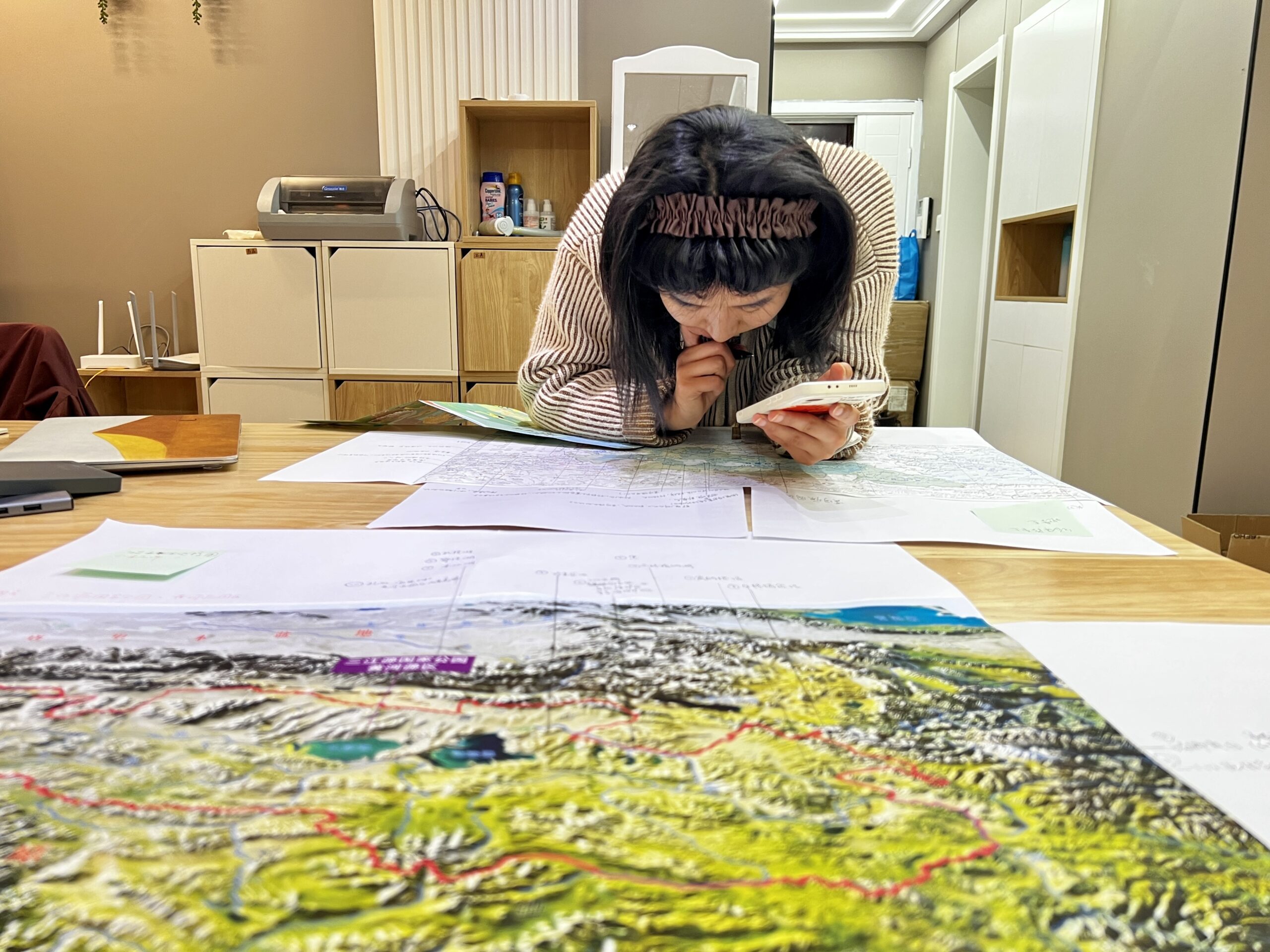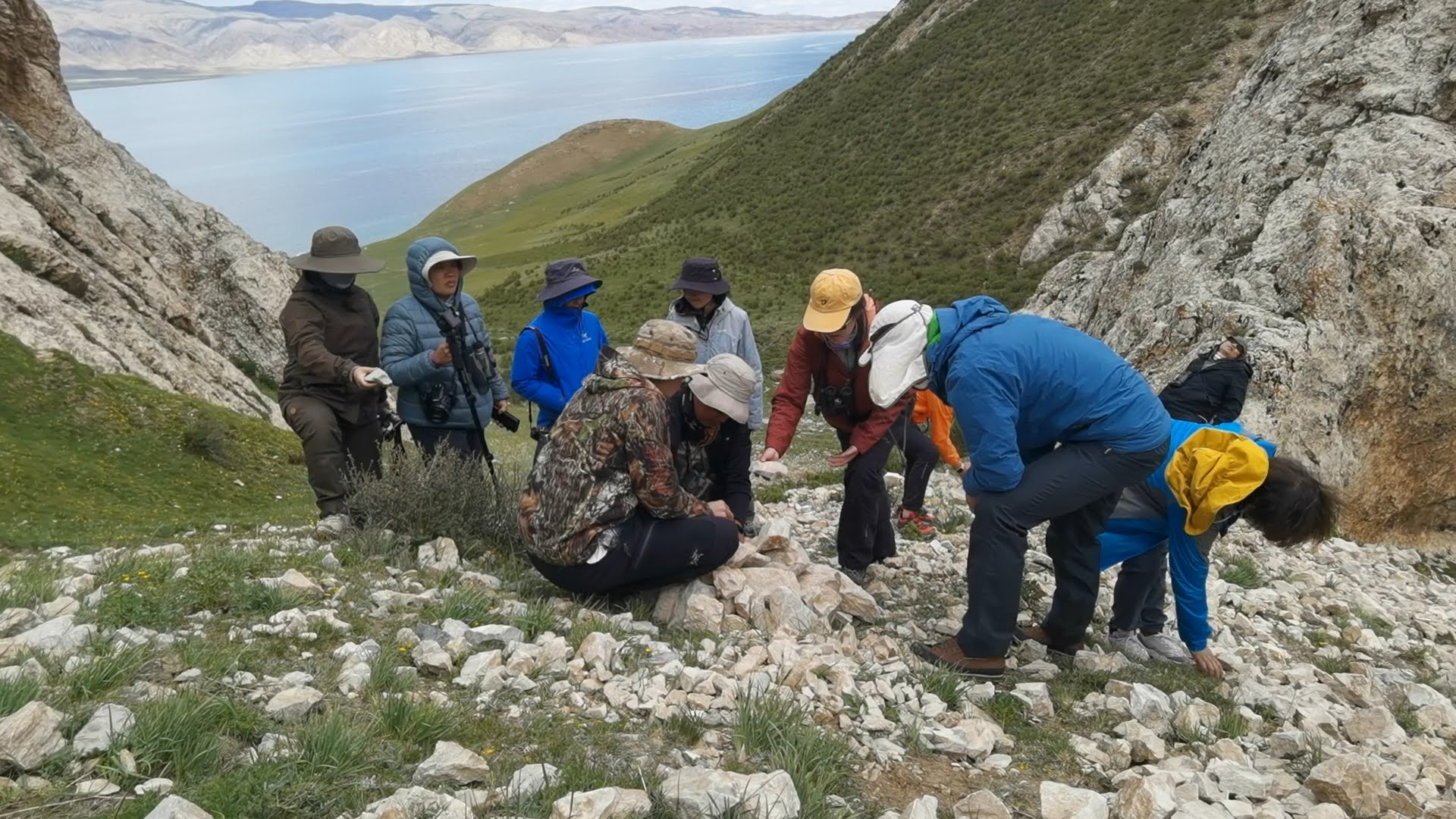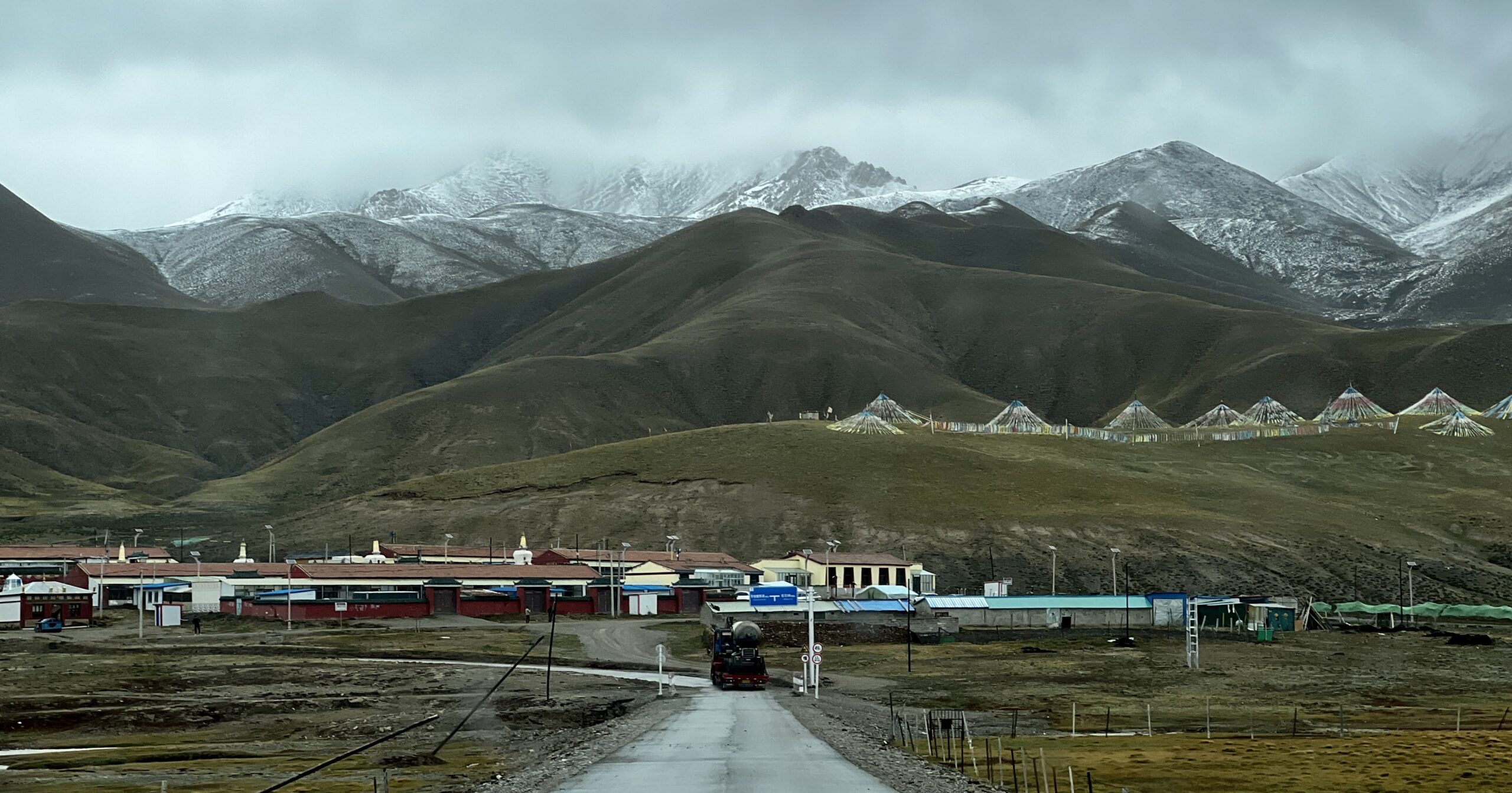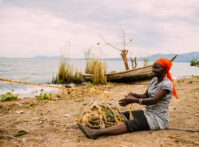-
China’s First National Park: Managing Access and Benefits
October 31, 2024 By Miranda Li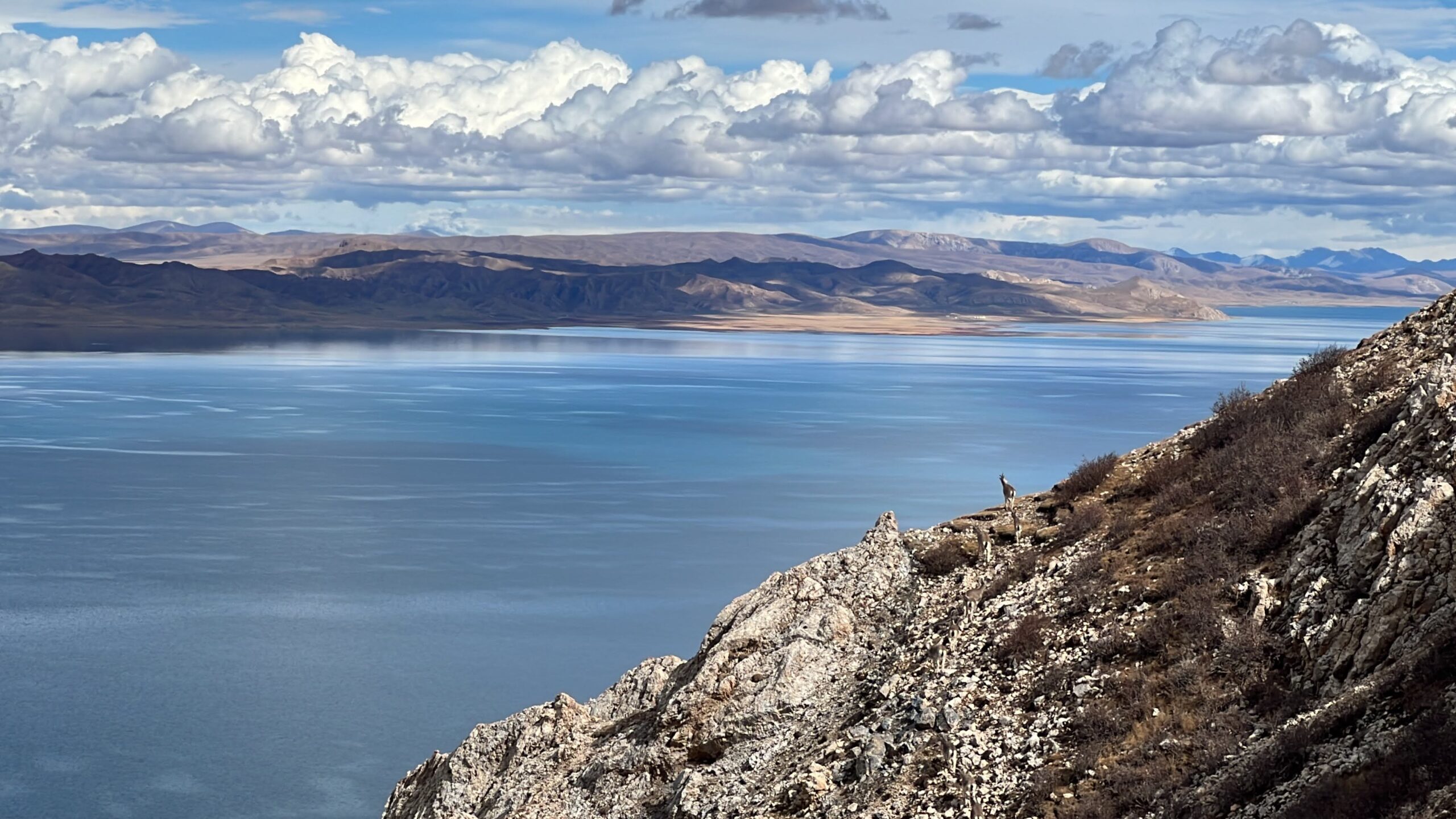 Bharal (Himalayan blue sheep) near Donggecuona Lake near Madoi are well camouflaged – look closely to find the nine in the photo.
Bharal (Himalayan blue sheep) near Donggecuona Lake near Madoi are well camouflaged – look closely to find the nine in the photo. As I hiked over the crest of a small hill near Donggecuona Lake in Madoi County, Qinghai Province, I startled a herd of over fifty bharal (Himalayan blue sheep) on the slope ahead of me. Some that were lying down suddenly scrambled to their feet. Others took a brief pause in their grazing to look up at me. I whispered to my guide Sonam Gyurme, “Look!”
He pointed to the rocky mountain crags above the hill: “Let’s see if we can spot a snow leopard. When there’s a herd of bharal, a snow leopard is usually not far away.”
As a guide in Sanjiangyuan (Three-River-Source), which is China’s first national park, Gyurme’s knowledge of the landscape is a boon for every guest who joins him on a tour. Especially when it comes to the native wildlife. “You might not see a snow leopard,” he is wont to say. “But it will certainly see you.”
 Gyaring Lake, the headwaters of the Yellow River in Sanjiangyuan National Park. On a typical day in Sanjiangyuan, besides bharal, visitors also might see wolves, upland buzzards, kiang (Tibetan wild ass), got (Tibetan gazelle), white-lipped deer, plateau pika, and even the elusive snow leopard.
Gyaring Lake, the headwaters of the Yellow River in Sanjiangyuan National Park. On a typical day in Sanjiangyuan, besides bharal, visitors also might see wolves, upland buzzards, kiang (Tibetan wild ass), got (Tibetan gazelle), white-lipped deer, plateau pika, and even the elusive snow leopard.  2024 Boundaries of Sanjiangyuan (Three-River-Source) National Park
2024 Boundaries of Sanjiangyuan (Three-River-Source) National ParkSanjiangyuan is an extensive park that is the size of 13 Yellowstone National Parks. It lies on the Qinghai-Tibet Plateau and it protects the headwaters of the Yellow, Yangtze, and Lancang (Mekong) rivers. Gyurme is a former national park employee who is now the director of operations for Yunjoy Nature — an eco-tourism company that holds a special concession license to operate inside Sanjiangyuan. His day and week-long “safari” tours are unmatched in the region. As the head of international strategy at Yunjoy Nature, I have been working alongside Gyurme and our other colleagues since mid-2023.
 Sonam Gyurme, known as “Eagle Eye” for his ability to spot animals from hundreds of meters away, explains the local fauna of Sanjiangyuan.
Sonam Gyurme, known as “Eagle Eye” for his ability to spot animals from hundreds of meters away, explains the local fauna of Sanjiangyuan.Concessionaires (特许经营) are businesses, non-profits, and community organizations that have a license to operate in national parks and provide services to visitors—from restaurants and hotels to tours and transportation. A well-designed system should be beneficial and equitable to concessionaires, visitors, and local residents, but this is not yet the case in Sanjiangyuan.
A new Sanjiangyuan master plan is an opportunity for park administrators to address this equity gap. They are using the experiences of groups like Yunjoy Nature as a starting point.
The Emerging Concession System
For nearly 15 years, Chinese forestry officials and scientists have been developing a national parks system to replace the patchwork of nature reserves. Launched in 2021, China now has five national parks, and it has identified 49 candidate areas to pull into the park system by 2035.
These new national parks will be vital for protecting the country’s nature and biodiversity. And to ensure the safety of visitors and ecosystems, China’s National Forestry and Grassland Administration (NFGA), the national parks management authority, needs considerable help in overseeing the preserves and providing services.
Yunjoy Nature’s day-to-day work at Sanjiangyuan far exceeds that of a typical ecotourism company. The company provides staff for the national park’s visitor center in Madoi, and it has created maps, specimens, and information signs for visitors. Yunjoy Nature also has scoped out possible hiking routes within the park, and its team has written reports for the NFGA on the development of the concessionaire system and tourism resources.
 Liu Nan annotating maps of the Yellow River. Mapping and policy work for the NFGA is an important part of the company’s mandate.
Liu Nan annotating maps of the Yellow River. Mapping and policy work for the NFGA is an important part of the company’s mandate.In this period of initial establishment and change for the national parks system, it is common for private companies and civil society groups to shoulder joint responsibilities in running these resources. In addition to holding direct training sessions for community rangers, Yunjoy Nature has been working alongside local officials to strengthen the overall park system.
Yet this process has “squeezed” Yunjoy Nature on all sides. One of my colleagues says that “as a private company, we have a harder time applying for grants and funding that would typically go to non-profits who view us as commercializing and capitalizing a public good; and other private sector businesses view us as a competitor unfairly monopolizing a resource via concession permits.”
 Yunjoy Nature staff training park staff on how to use rock structures to set up infrared camera traps in area without trees.
Yunjoy Nature staff training park staff on how to use rock structures to set up infrared camera traps in area without trees.A Need for Visitor Access and Community Benefits
Yunjoy Nature tours cost an average 2000RMB (~280 USD) per person per day. This high price is due to the significant costs of operating in Sanjiangyuan. Its rough roads must be traversed in 4×4 vehicles, and the tourism season here is short (July – September). Thus, access to these tours is generally limited to wealthier residents and urbanites. Equitable access is not a part of Yunjoy Nature’s mandate, however, and a flood of visitors would strain the local government’s capability to protect both the park and the tourists.
A 2023 evaluation of Sanjiangyuan’s first four concessionaire organizations (including Yunjoy Nature) revealed that these companies did not generate significant financial benefits for the local government. Yet they did succeed in improving local livelihoods.
Yunjoy Nature brings tourists to local restaurants and hotels, and hosts training programs for local community members to become conservation stewards in ecotourism jobs. Yet the company does not share revenue across community members more broadly.
 Village inside Sanjiangyuan National Park.
Village inside Sanjiangyuan National Park.By contrast, the Angsai Valley of the Cats homestay program, located in the Lancang River Source region of Sanjiangyuan, is run with a community cooperative model facilitated by Shan Shui Conservation Center. In this community tourism model, host families keep 45% of the revenue—and distribute the rest across the community.
Yet even in this enterprise, not all residents are happy. One local citizen complained that the homestay program was limited to the 22 households with whom Shan Shui typically works. He wanted to join the program to host visitors, but could not do so.
In both cases, the presence of a concessionaire creates inequalities within the community between those who benefit through jobs and other forms of participation—and those who are excluded. Concessions mean that the state and other institutions can control participation in its national parks, actively or even inadvertently.
On my day on the hills above Donggecuona Lake with Gyurme, we never did spot a snow leopard. But we did see white-lipped deer, wolf, kiang, and goa. Driving back to Madoi, I reflected on how much I wished to share the beauty and wonders of this national park with the rest of the world.
A new Sanjiangyuan National Park Master Plan (2023-2030) may offer that opportunity soon. The NFGA’s vision includes expanding the concession system in the following ways:
- Clarifying the responsibilities of stakeholders and avoiding monopolization in the concession model.
- Raising service standards in concessions for environmental education, ecotourism, and other activities for visitors.
- Boosting local stakeholder co-management of concessions in animal husbandry and ecotourism to improve livelihoods.
Miranda Li graduated from Tsinghua University’s Schwarzman Scholars masters program in 2022. She has worked on conservation in China at Shan Shui Conservation Center and at Yunjoy Nature. As the head of international strategy at Yunjoy Nature, she assists with fieldwork and guide training; writing reports and grant proposals; doing benchmarking analysis of national parks around the world; creating bilingual maps; cooking and even driving.
Acknowledgments: The author would like to express her gratitude to her colleagues and friends at Yunjoy Nature for welcoming her into their community and generously sharing their work and stories.
Map credit: Courtesy of Yunjoy Nature
Photo credits: Photos courtesy of author
Sources: China Daily, China National Forestry and Grassland Administration, Land, Natural Protected Areas, Paulson Institute, People’s Daily Online, Sixth Tone, University of Montana Public Land & Resources Law Review, US National Park Service, Yunjoy Nature
 A Publication of the Stimson Center.
A Publication of the Stimson Center.

